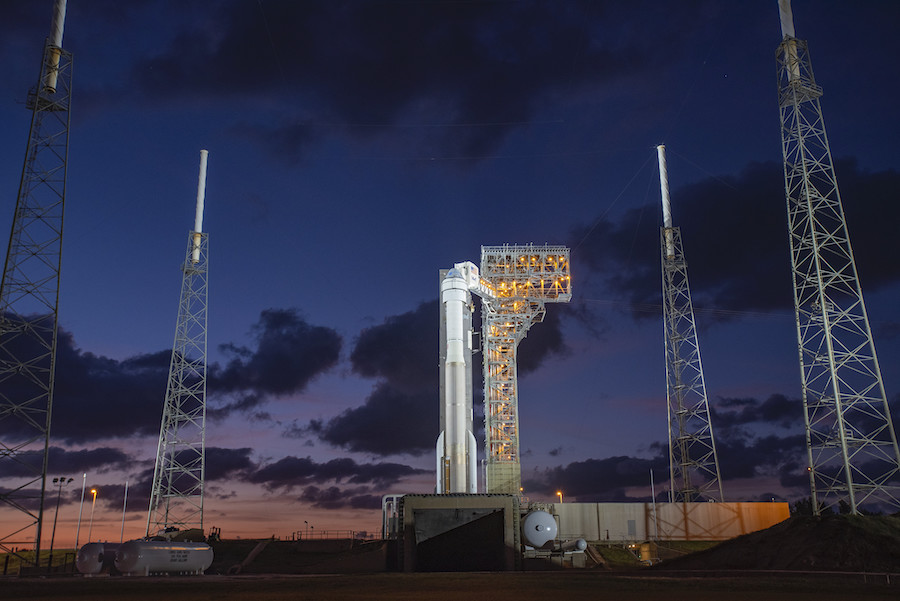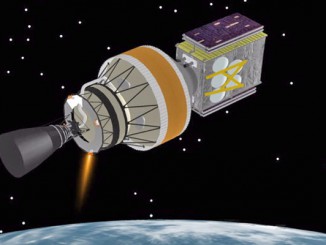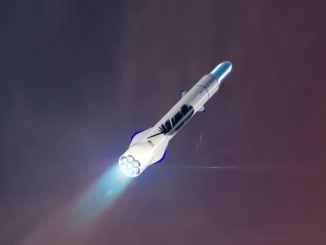
The Atlas 5 countdown leading up to Friday’s early morning liftoff from Cape Canaveral with Boeing’s Starliner crew capsule will be several hours longer than usual.
The requirements of crewed missions have forced ULA’s launch team to adjust their countdown timeline leading up to the target launch time Friday at 6:36 a.m. EST (1136 GMT).
The Atlas 5 countdown typically lasts nearly seven hours for a satellite launch. For Starliner’s Orbital Flight Test, , which will head to the International Space Station on an unpiloted shakedown mission, the countdown will run 11 hours, 20 minutes.
The countdown is set to commence at 7:16 p.m. EST Thursday (0016 GMT Friday), when teams in the Atlas Spaceflight Operations Center at Cape Canaveral will begin procedures to power up the launch vehicle and conduct propulsion and guidance, navigation and control system checkouts.
The clock will begin ticking at T-minus 6 hours, 20 minutes. Five hours of the countdown will be dedicated to built-in holds, during which rocket preps will pause to allow status checks and permit a “Blue Team” of technicians to enter the launch pad and climb the crew access tower, where they will open Starliner’s hatch and rehearse the activities they would perform to help astronauts board the capsule on future flights.
The countdown’s first built-in hold is planned at T-minus 2 hours, when clocks will stop for an hour-long pause. Before coming out of the hold, ULA’s launch conductor Doug Lebo will poll his team for approval to begin loading super-cold liquid hydrogen and liquid oxygen into the Atlas 5.
After the countdown clock resumes, ULA’s launch team will begin loading the Atlas 5’s first stage with liquid oxygen, and filling the Centaur upper stage with its mix of liquid hydrogen and liquid oxygen propellants. The first stage’s supply of RP-1 kerosene fuel has already been pumped into the rocket.
The cryogenic fueling steps should begin at 12:36 a.m. EST (0536 GMT).
Once the fueling steps are complete, a built-in countdown hold at T-minus 4 minutes, which normally lasts 15 minutes, will extend for four hours, a change to give the astronauts time to board the spacecraft.
“We will count down all the way to T-minus 4 minutes,” said Caleb Weiss, ULA’s program manager for Starliner missions. “The vehicle is, at the point, where it is ready to launch, we’re about to enter terminal count, and then we’ll hold four hours. That point is made to make sure that we are safe and stable, that we’ve done everything on the rocket to get it into flight condition. We’re not having to do any other switch flipping or changes in configurations.
“We really want to be in that that flight condition when the crew goes out there because that’s the safest,” Weiss said. “That gives us time to review all the data, and ensure that we’re going to let the crew go out there only after the vehicle is verified safe.”
The eight-person Blue Team, comprised of ULA and Boeing employees, will arrive at the launch pad around 3 a.m. EST (0800 GMT) after fueling is complete. Low flows of cryogenic propellants will continue pumping into the rocket until the final few minutes before liftoff to replace the fluids that naturally boil off in the ambient environment at the Florida launch base.

The ULA members of the Blue Team will first enter the white room near the top of the 200-foot-tall crew access tower, verify conditions are safe, and set up an environmental seal around the perimeter of the white room’s interface with the Starliner capsule. Then Boeing’s team will take over to open the Starliner hatch, install some last-minute cargo, and rehearse the steps they will take to help astronauts into the spacecraft.
They will then close the Starliner side hatch at around 5:11 a.m. EST (1011 GMT) and perform cabin leak checks to ensure the spacecraft is pressurized for flight.
ULA constructed a slide wire system at pad 41 to provide an emergency escape route for the Blue Team and Starliner astronauts in the event of a major problem during the countdown.
SpaceX, NASA’s other commercial crew contractor, will strap astronauts into the Crew Dragon capsule before fueling of the ship’s Falcon 9 booster. SpaceX argues its plan, known as “load and go,” is safer because ground teams will not be at the launch pad with the rocket fueled for liftoff, and the Dragon crew could escape from the Falcon 9 using the capsule’s abort engines in case of an emergency.
Boeing’s plan for strapping the crew into the Starliner spaceship mirrors the way NASA boarded astronauts during the Apollo and space shuttle programs. The Blue Team is analogous to the closeout crew of the Apollo and shuttle eras.
The Blue Team will evacuate the pad around 6 a.m. EST (1100 GMT), or roughly a half-hour before liftoff, and fall back to a safe location north of the launch complex.
The crew access arm will retract from the Starliner spacecraft less than 10 minutes before launch, and ULA’s launch team will again be polled for approval to resume the countdown.
Then the countdown clock will start ticking again at T-minus 4 minutes, and the Atlas 5 will switch to internal power, pressurize its propellant tanks, and prepare for ignition of its RD-180 main engine at T-minus 2.7 seconds, followed by the firing of its two solid rocket boosters to push the rocket off the pad.
Read our previous story previewing the Orbital Flight Test, with additional details about the Atlas 5 rocket’s launch profile.
Email the author.
Follow Stephen Clark on Twitter: @StephenClark1.



